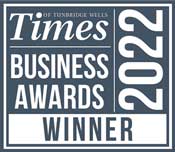Trustee Responsibilities
Trustees have numerous responsibilities when running a trust. They are personally liable for ensuring the trust is properly managed, and this often includes annual tax returns and accounts. This is often why professional trustees are used.
Trustees have responsibility for:
- distribution of trust property
- day to day management of the trust and duties in relation to matters such as investments; trustees must invest trust property properly.
- appointment of trustees
- transferring trust property
- taxation of the assets (often annually)
- accounting for the assets (often annually)
Trustees are usually given wide ranging management powers.
When preparing trust documentation consideration should be given to:-
- The appointment and retirement of trustees.
- Trustees who are also beneficiaries should also be allowed to “self deal”. This is to get around the general position, which a trustee should not enter into transactions themselves regarding the trust property.
- An indemnity clause against loss to the trust caused by the trustee except in the case of dishonesty.
- Delegation of some functions such as management of investments. This is not permitted for all functions.
- Trustees should not make a profit from the position unless there is specific authorisation for this. If appointing a professional trustee this should be included.
Issues relating to trustee investments
When setting up a trust you will need to consider the need to give flexibility to the trustees. Sometimes difficulties can occur where the assets are shares in a family company. Usually risk should be avoided by diversifying investments. We will usually recommend that the trustees have the power to do this.
Trustees are obliged to invest the trust property properly. The type of investments will depend on the needs of the beneficiaries. In some cases long term capital growth may be most important if there is not an immediate need. On the other hand income can be more important which may be at the expense of capital growth.
If the trustees take an excessively risky investment strategy there is a possibility of a legal challenge.
Example from case law
The beneficiaries of a trust with a value of £3.4m sued the trustees as a result of substantial exposure to investments in the hi-tech sector prior to the collapse of the tech bubble in 2001. The losses claimed were £1.4m!
As well as investing in securities the trustees will need to consider the need to some assets in liquid form to cover the expenses of managing the investment. The trustees should also keep the investments and their investment strategy under review and keep a record of this.
The approach may change over time. While child beneficiaries at an early age may not need any income just that will benefit most from capital growth, they may have later needs.
Another consideration is to minimise the amount of capital gains tax (CGT) payable. It should be borne in mind that the annual exemption is half for a Trustee that of an individual. In some cases investing in land to be lived in by one of the beneficiaries is tax efficient. Why? Because there is no capital gains tax on the rise in value of your own residence.
Trustees are recommended to:-
- Keep the investment strategy under review as different sectors perform differently over time
- Diversify investment
Consider how certain retailers who may have been seen as solid investments in the past have lost value in the face of competition from online competitors.
CALL US TODAY
Call us now on 0808 256 2917 for a confidential and no obligation initial discussion or email [email protected].
The appointments of trustees
Trustees have a special duty known as a “fiduciary” duty. They have a special duty to administer the trust for the benefit of the beneficiaries and to act in good faith. The responsibility comes into place as soon as the trust is executed. It goes without saying that care must be taken as to who is appointed. The number of trustees should also be considered and typically it will be between 2 and 4 individuals.
In considering your trustees consider:-
- A professional trustee such as an accountant or solicitor. If this is to be done a charging clause will need to be included. Of course, the cost will also have to be considered.
- Whether you as settlor wish to be a trustee. It would not be appropriate to be paid in such circumstances.
- Use a “letter of wishes” with a view to influencing how the trustees exercise their powers without forcing them in anyway without being a trustee yourself. This is important if the trust is to continue ate
- A beneficiary can be a trustee but there is of course a potential for a conflict of interest. It is not a good idea for a beneficiary to be a sole trustee.
If trustees need to be appointed a proper procedure needs to be followed.
- The person appointing must have the power to do so
- an appropriate Deed of Appointment must be drawn up
- the trust property must be transferred to the new trustees.
Sometimes the person making the will will want to keep control over the appointments of Trustees during their lifetime. This can only take place if there is a specific clause allowing for this. If this is your intention we can advise you on the appropriate clause.
There is a statutory power to appoint trustees by the Court but it is of course much better to avoid this by having a properly drafted trust deed.
There are certain requirements about the replacement trustees. They must be appointed in writing by surviving or continuing trustees or the personal representatives of the last surviving trustee. Legislation allows for this to take place where a trustee has died, is incapable of acting or who retires.
The law allows for the appointment of up to 4 trustees.
There is also a power for the beneficiaries to direct the appointment of new trustees where they wish the trustees to retire or be appointed. They have to be of full age and capacity and act jointly.
Tax while the settlement is administered
Taxation will arise during the period that the trust is administered.
Where the assets are sold by the trustees these will be treated as disposals for capital gains tax (CGT).
First the chargeable gain is calculated. Then, the annual exemption is applied at half the rate of the annual exemption for an individual. Finally, the balance is subjected to the relevant rate of tax.
There is possibly a relief known as “entrepreneur’s relief” where there is a disposal of certain business assets under certain conditions.
In the case where there is a loss made on the assets, these can be made against the gains made on other sales in the same tax year.
Tax is also payable on the income generated by the Trust assets. Since 2016/17 all income is received gross and tax will have to be paid across to HMRC by the trustees.
If the beneficiaries of the trust are entitled to income, this will arise in cases where the settlement terms state this. The trustees will be liable for tax at the relevant rate and the ordinary dividend rate.
In the case of a settlement where there is no right to income the dividend rate is paid. For non-dividend income it is 45% and for dividends 38.1%.
However, there is a lower rate on the first £1,000 of income.
An example where this applies would be:-
The current rates for income under a £1,000 are 20% on non-dividend income and 10% on dividend income.
There is a particular order at which the tax on income is applied at the lower rate. Unfortunately, where the income subject to a higher rate, the non-dividend income has to be calculated first and then the dividend income.
Where a beneficiary has a right to receive the income from the Trust, this is added to his or her personal income. As tax at 20% and 7.5% would already have been paid it would only be if the beneficiary is a higher rate tax payer that there will be additional tax.
The trustees should provide the beneficiary with a tax deduction certificate form R185, to pass on to the Revenue.
In the case where there is no right to the income but discretion is used to pay it to the beneficiary, the trustees will also issue a form R185. A tax credit will be received for the tax paid to the trustees.
If the trustees have paid at the trust rate, in some cases, the tax paid will be recoverable from the revenue.
Where the beneficiaries do not have a right to income but there is a discretion on the trustees part to pay it out the tax treatment will be as follows:-
- If income is in fact paid out then the beneficiary will receive a Form 185 from the trustees with the amount of tax. As in some cases the amount paid at the Trust rate will be higher than the beneficiary’s rate they may receive a rebate.
- If the money is not paid out to the beneficiary then the tax will be paid by the trustee at the trust rate (45% on income other than dividends and 38.5% on dividends) and the beneficiary will not have the opportunity of obtaining a rebate.
The implication of the above is that it may be beneficial from a tax point of view for the Trustee to pay income out for the maintenance educational benefits of the beneficiaries.
Distributing the trust funds
One duty of the trustees is to account to the beneficiary for the assets in the trust.
The assets will show the investment and cash and any income held. It will then be clear to the beneficiary what their entitlement is.
Clearly it will assist if proper records are kept throughout the existence of the trust.
The trust fund must be transferred to the beneficiary after the payment of any tax liabilities. For shares a stock transfer form will be required and if it is land a special form of document known as a deed will have to be prepared.
CALL US TODAY
Call us now on 0808 256 2917 for a confidential and no obligation initial discussion or email [email protected].











